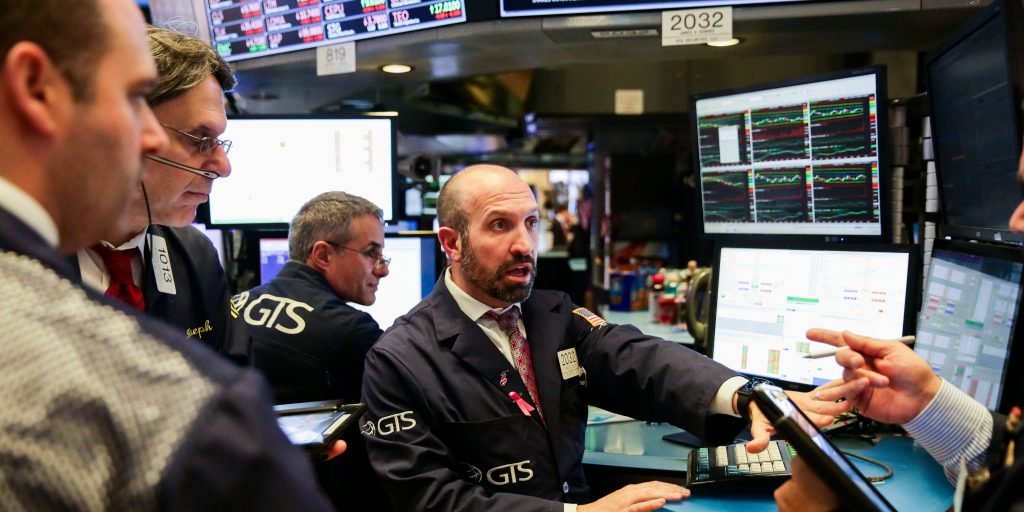
- US stocks wavered Wednesday ahead of the Fed's policy decision at the end of its two-day meeting.
- Analysts expect the US central bank to accelerate the pace of tapering its bond-buying program.
- Oil prices slid in the wake of the IEA's warning that surging COVID-19 cases will dent demand.
US stock futures struggled to find direction Wednesday, as investors waited to see whether red-hot inflation and the fast-spreading Omicron coronavirus variant will prompt the Federal Reserve to shift policy.
Futures on the Dow Jones and S&P 500 were about flat as of 5:40 a.m. ET, while the Nasdaq fell 0.2%, suggesting a cautious start to trading later in the day.
Markets expect the US central bank to accelerate the pace of cutting back on bond-buying brought in to support the economy during the pandemic, currently at $15 billion a month. That would let it bring forward the end of the process to March from June.
"At their last meeting in November, the Fed announced they would start to taper their asset purchases, but there's strong anticipation that just six weeks later, they'll be accelerating that pace today," Deutsche Bank strategists said in a note.
Central bank policymakers will end their two-day policy meeting Wednesday and release a statement at 2 p.m. ET, followed by a briefing from Chair Jerome Powell 30 minutes later.
On Tuesday, official figures showed producer price inflation rose 9.6% in November, the fastest pace since records began in 2010, and up from 8.8% in October. Consumer price inflation jumped 6.8% last week, hitting its highest level in 39 years.
Those inflationary pressures are likely to put the Fed discussion into a more hawkish frame, according to Chris Beauchamp, chief market analyst at trading platform IG.
"Investors continue to expect higher prices to flow through the economy regardless of what the Fed does, but a shift towards rate hikes next year seems very much nailed on," he said.
At least two interest-rate rises in the next year seem likely, according to analysts.
Elsewhere, stocks in Europe traded in a wait-and-see mode ahead of Thursday's decisions from the European Central Bank and the Bank of England. The pan-continental Euro Stoxx 600 added 0.4%, while Frankfurt's DAX gained 0.4%. But London's FTSE 100 fell 0.3%,
Data on Wednesday showed UK inflation jumped to a 10-year high of 5.1% in November, from 4.2% in October. But most analysts expect the BoE to hold fire in its interest-rate decision.
"The Omicron situation appears to be worsening, and with more restrictions still a possibility before Christmas, or perhaps more likely into the new year, a move to increase interest rates even slightly this week would be a courageous decision at best," Beauchamp said.
The coronavirus variant is spreading around the globe at an unprecedented rate, and is now present in 77 countries, the World Health Organization said Thursday.
Asian markets underperformed after official Chinese data showed November retail sales missed expectations, while industrial production beat estimates.
The Shanghai Composite fell 0.38%, and Hong Kong's Hang Seng lost 0.9%. Tokyo's Nikkei 225 closed down 0.1%.
Oil prices fell on worries that the spread of Omicron could disrupt demand. The International Energy Agency revised its 2022 demand outlook down earlier this week, saying any recovery will be hurt by the surge in cases.
But the OPEC's monthly report released Monday showed it believes the impact of the virus on oil demand will be mild and short-lived.
Brent crude futures fell 0.8% to $73.11 a barrel, and West Texas Intermediate lost 1% to reach $70.02 a barrel.
